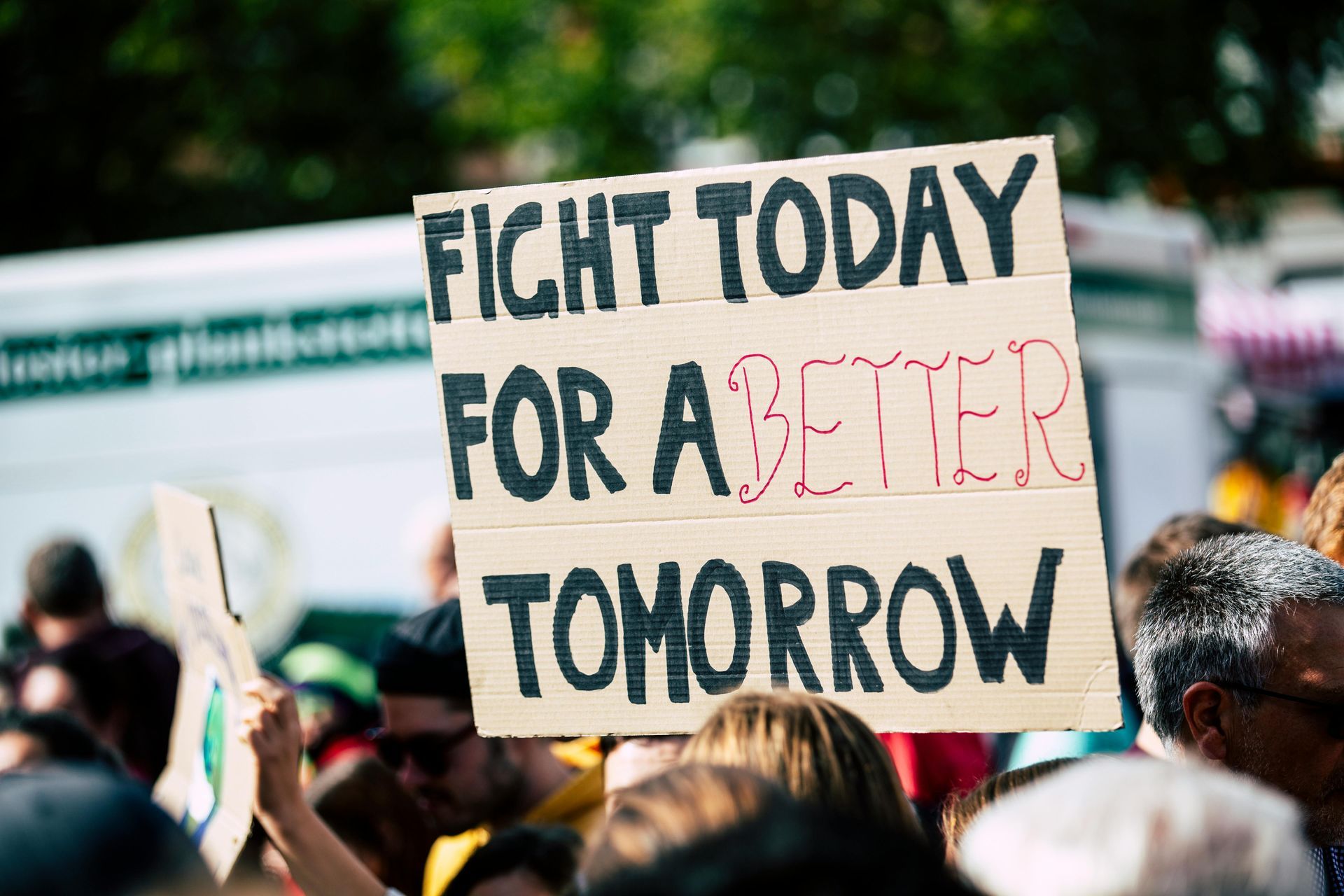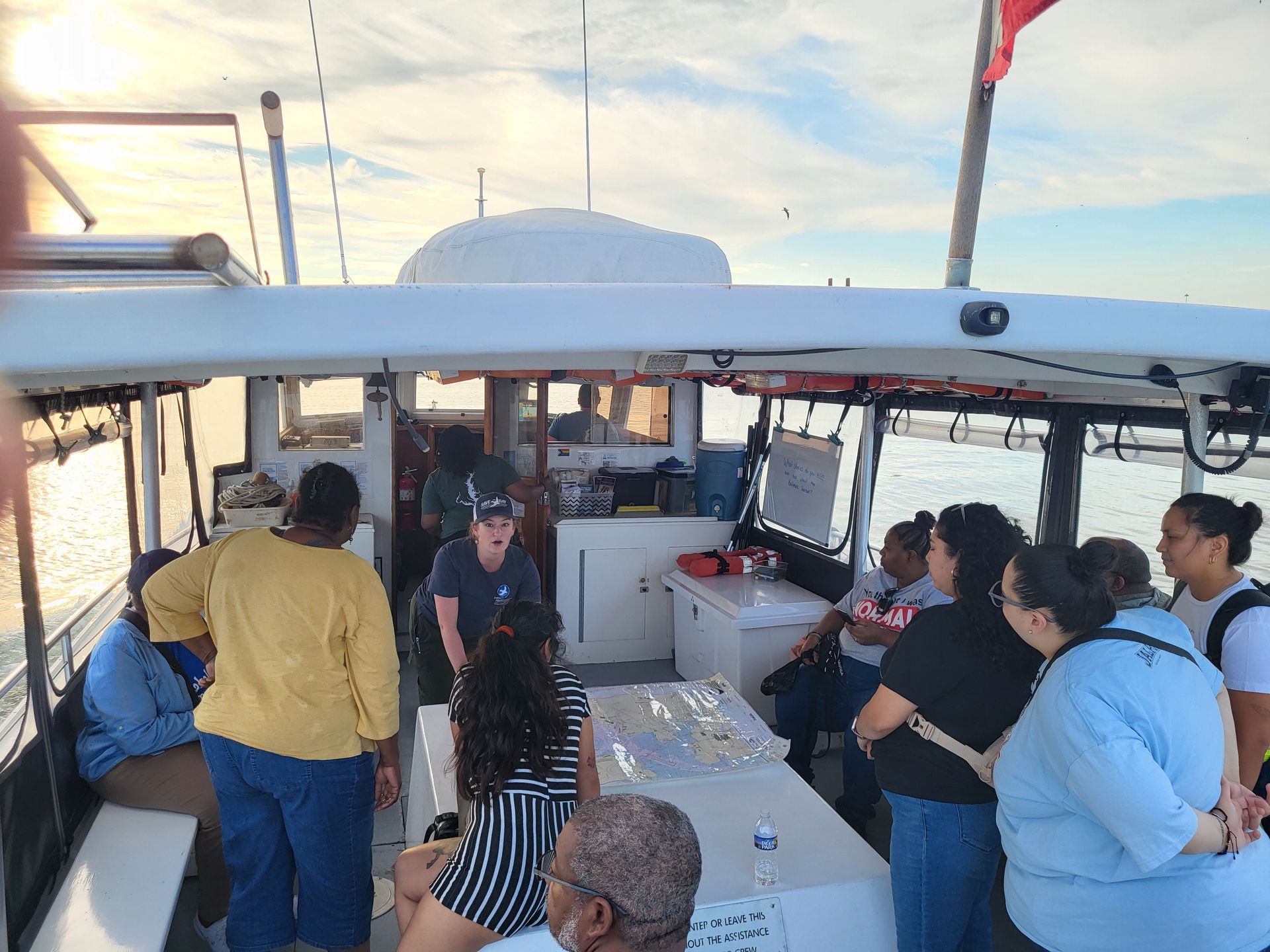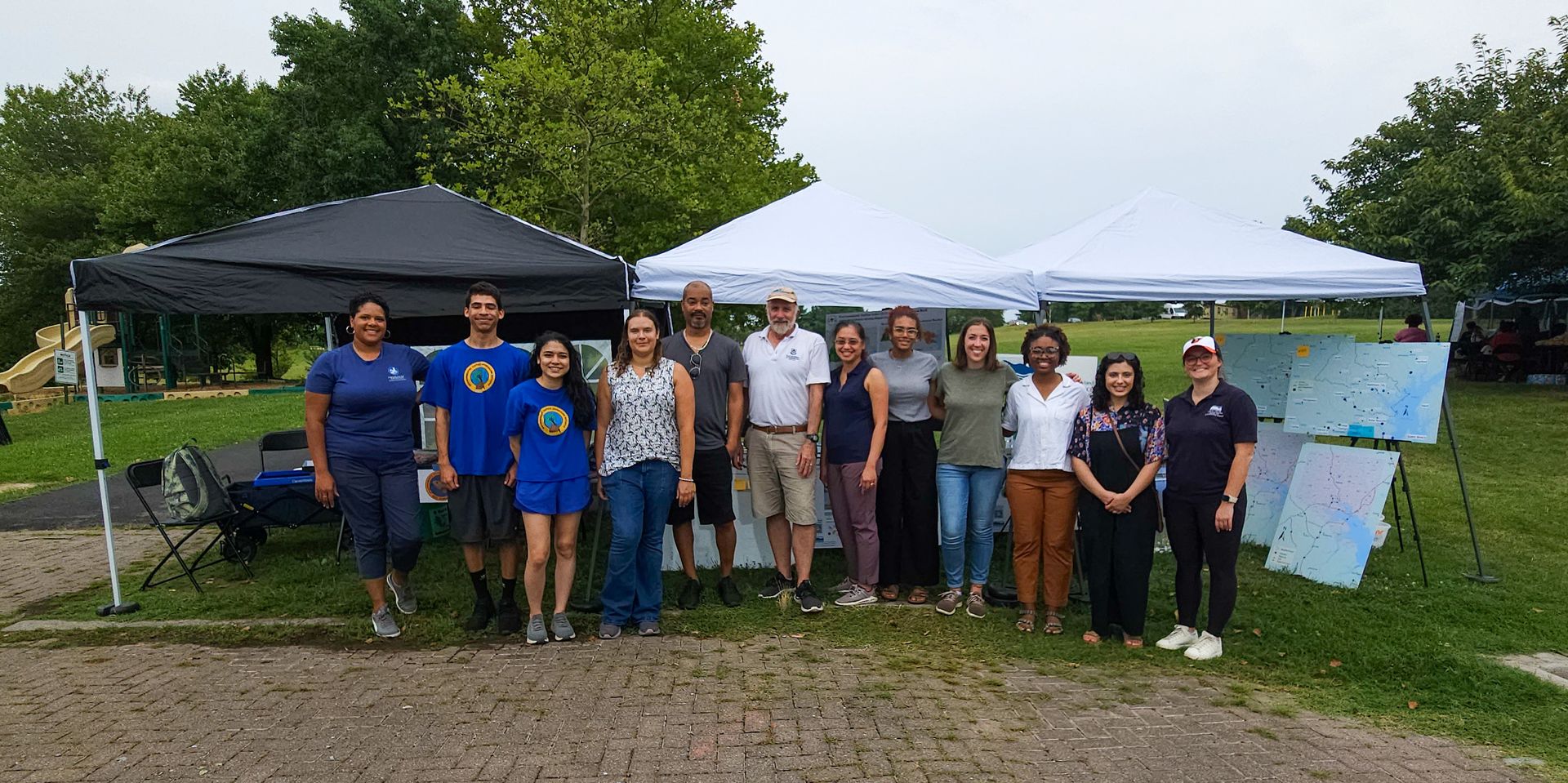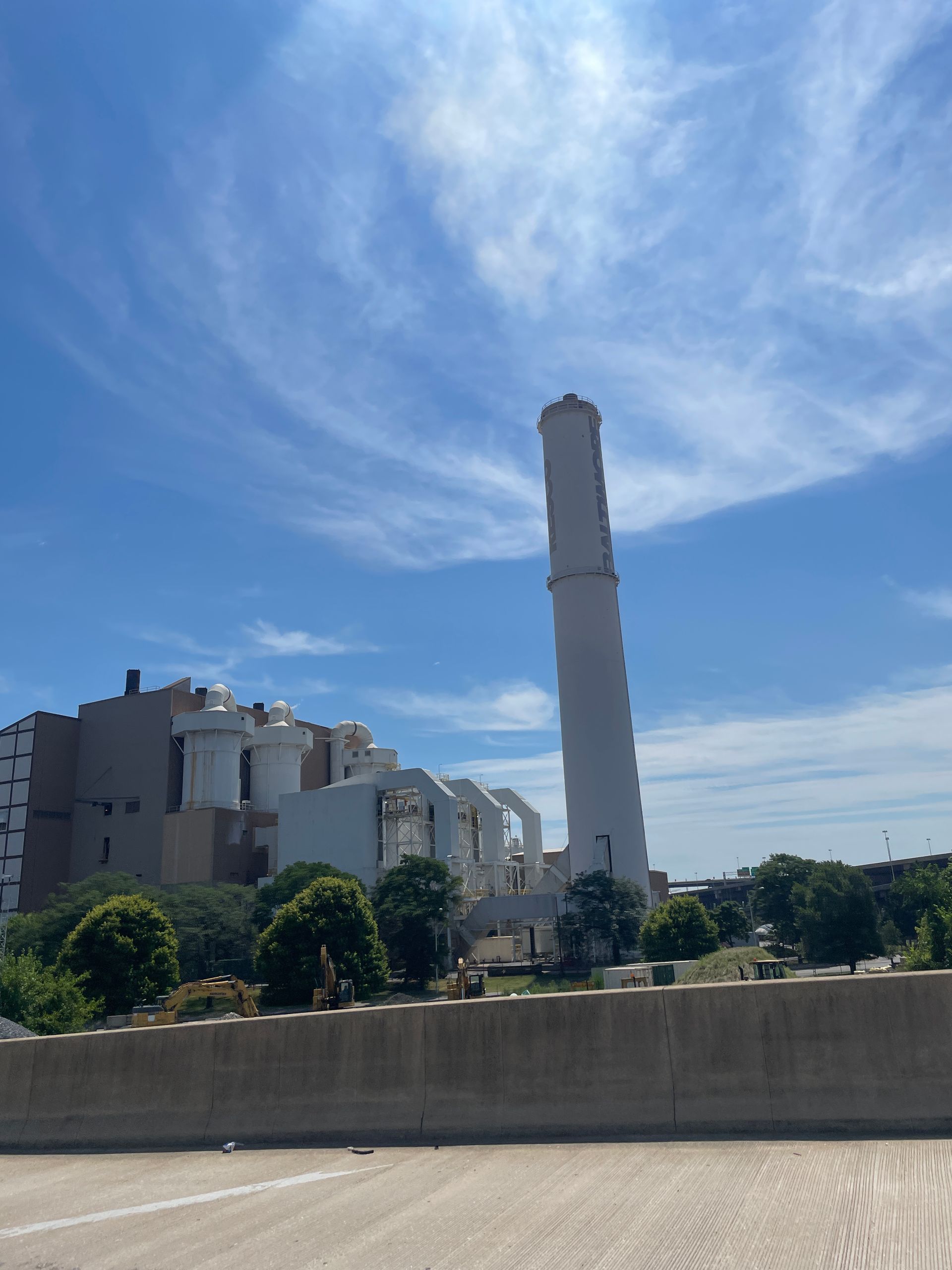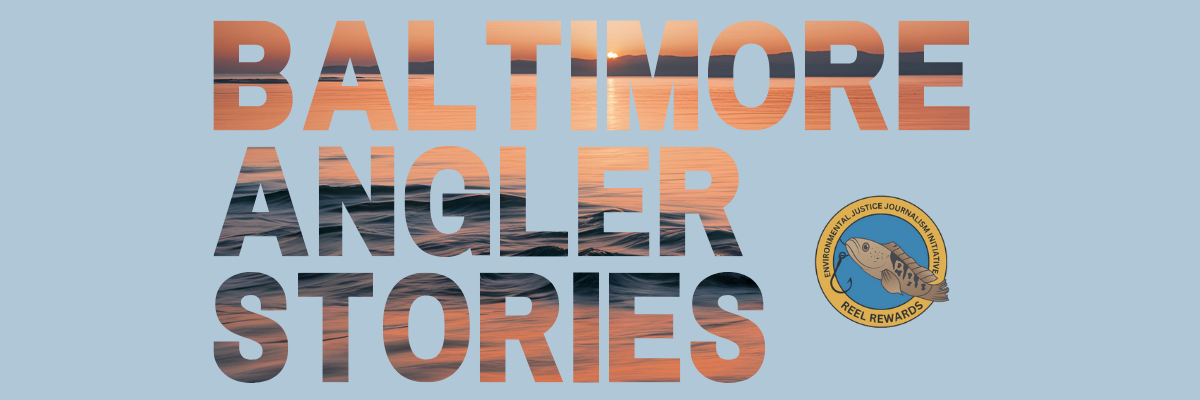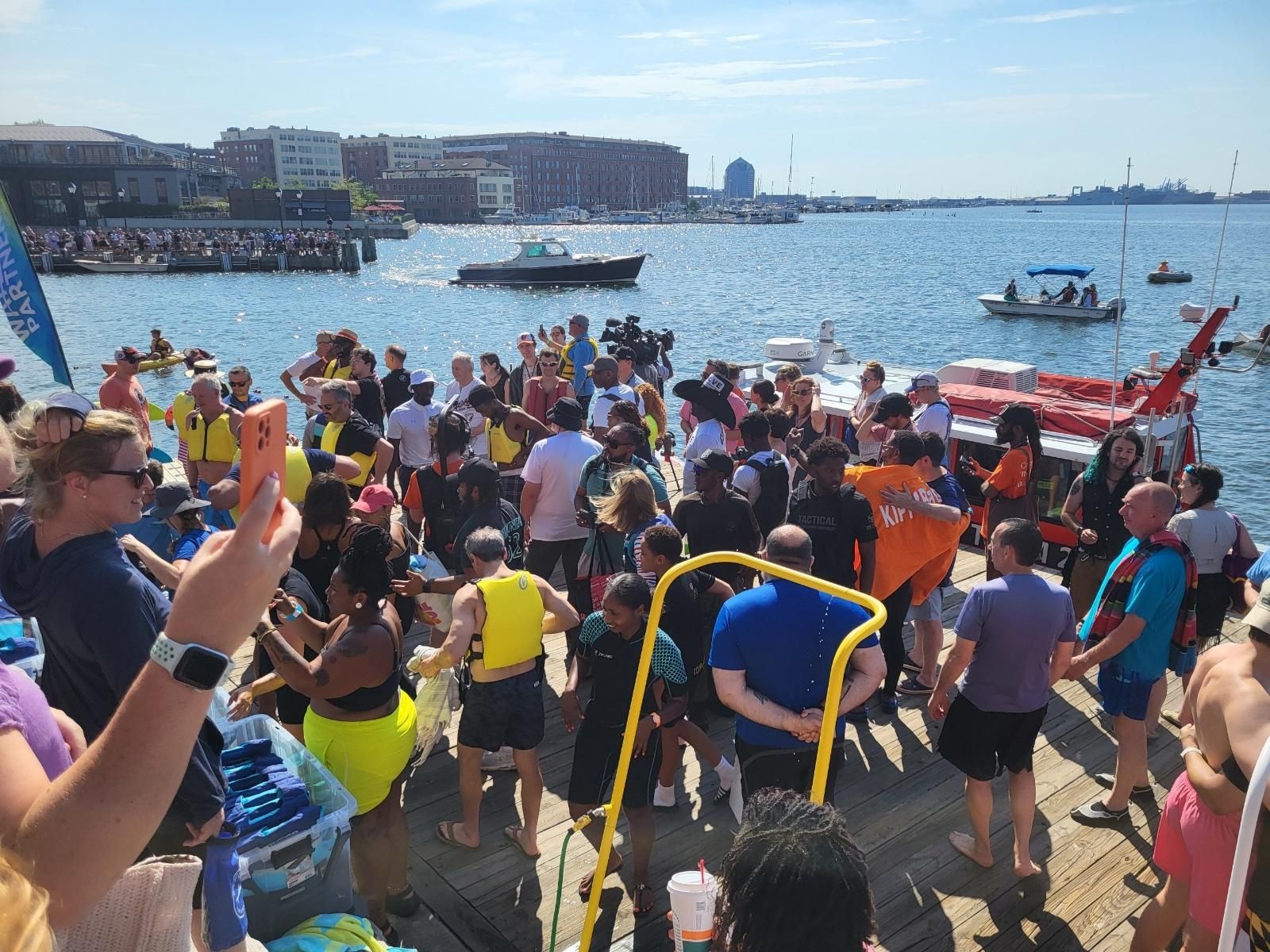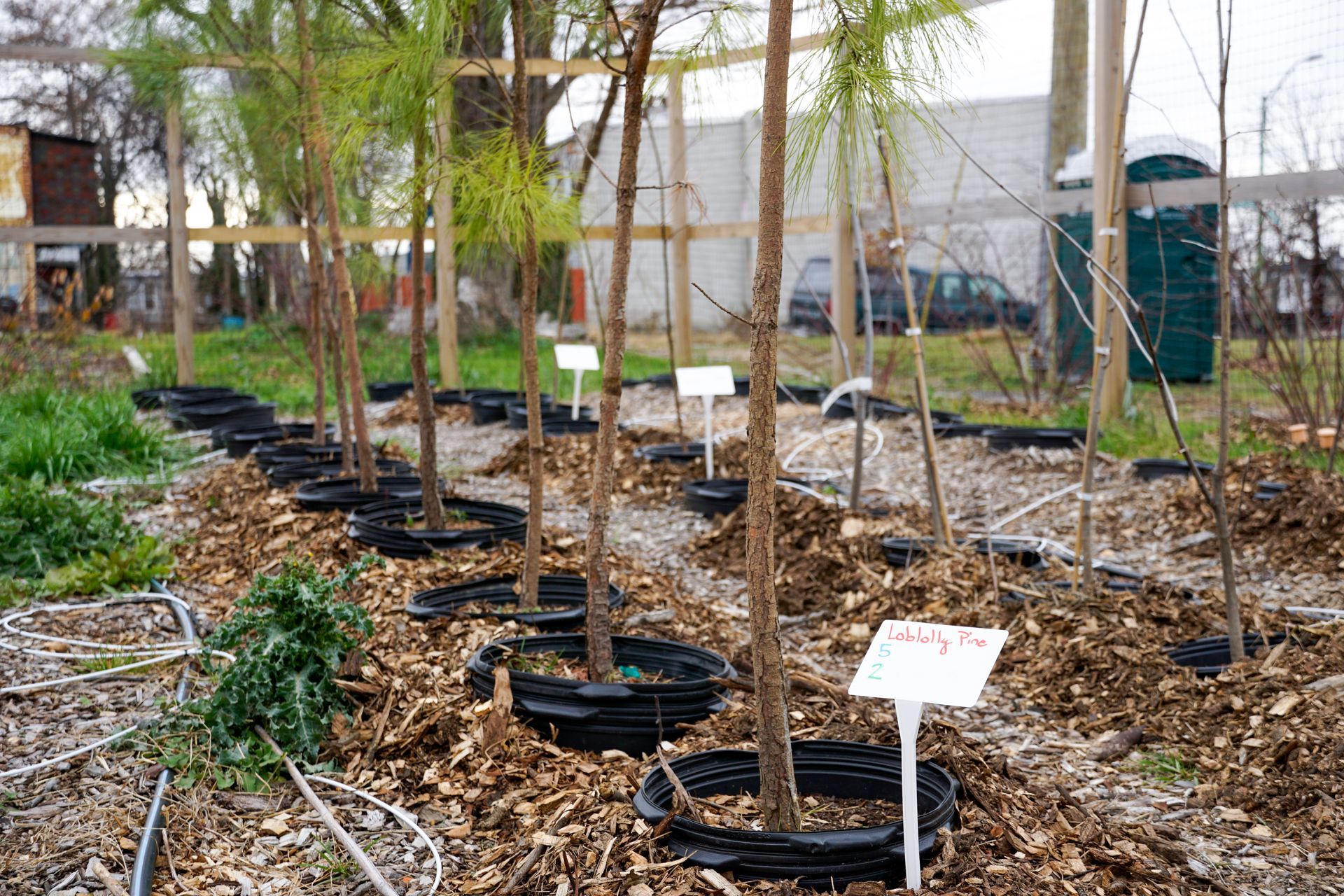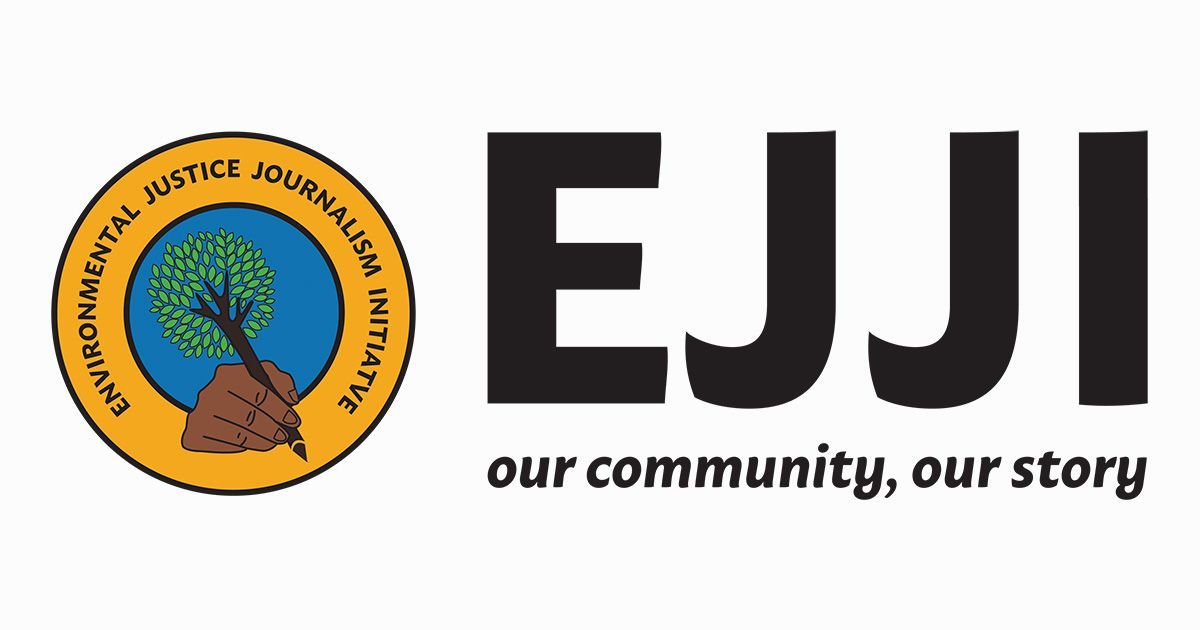Baltimore’s Murals Highlight Beauty Amid the Blight
Baltimore’s Murals Highlight Beauty Amid the Blight
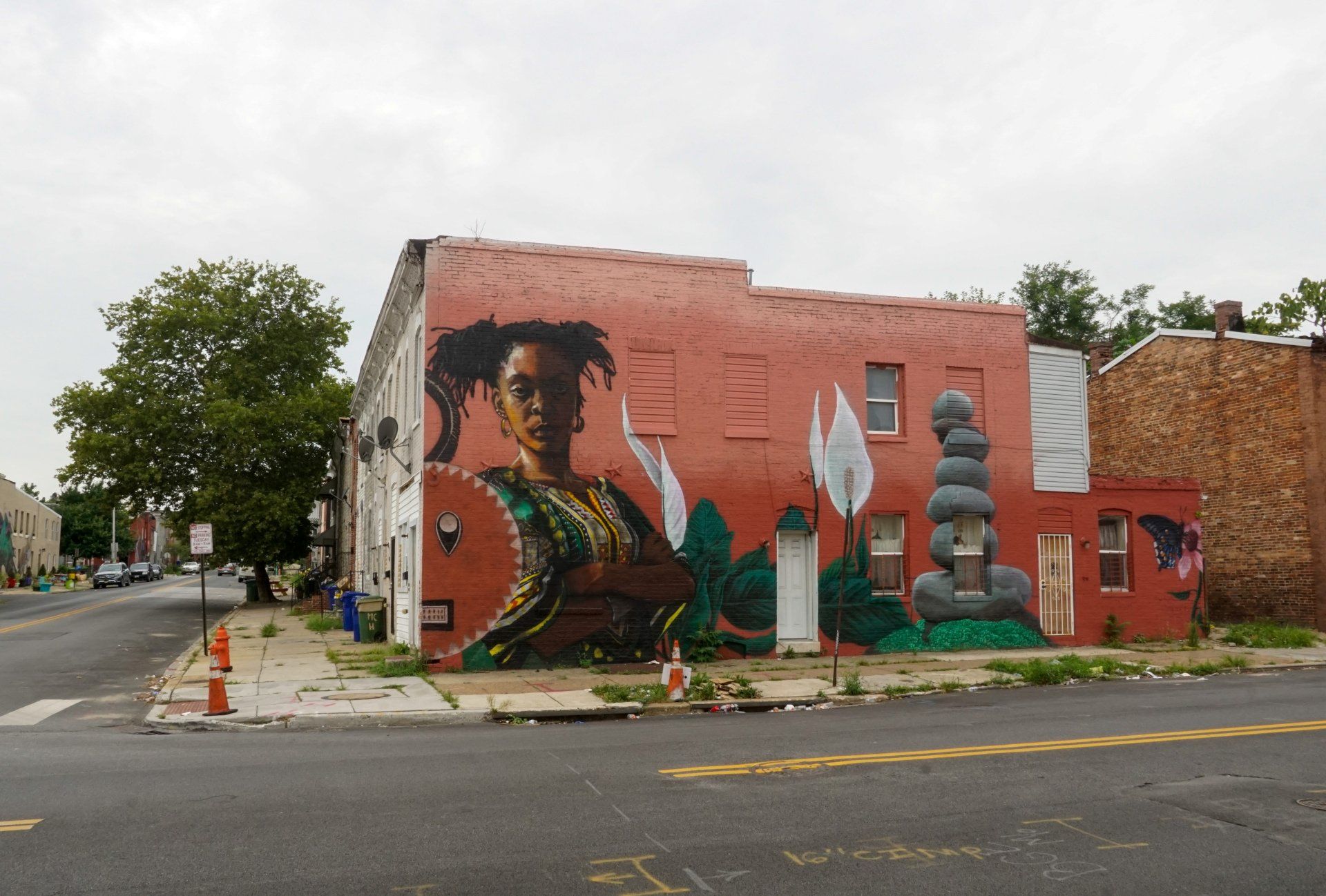
By Laura Quigley
In a sprawl of concrete, brick, and asphalt, a two-story mural overlooks the Duncan Street Miracle Garden near North Avenue in Southeast Baltimore. Like the garden itself, the mural’s greenery and colorful blooms create a natural oasis in its urban surroundings. On the mural’s right side, a portrait of the garden’s long-time caretaker, Lewis Sharpe, pays homage to a critical environmental justice issue – food security through urban farming.
Painted by renowned Baltimore-based muralist Gaia the mural is one of many that shine attention on environmental justice issues in Baltimore City communities through latex and acrylic paint.
In Baltimore City, murals and environmental justice – a movement to counteract the disproportionate harms of environmental issues on marginalized communities –go hand in hand. According to the Baltimore Office of Promotion & the Arts’ (BOPA) Baltimore Mural Program map, nearly half of the more than 250 murals created through the program contain elements of nature or speak directly to environmental justice issues.
Created in 1975, the city launched the Baltimore Mural Program (BMP) to create positive change in Baltimore communities through large art installations. By the time Shawn James – the founder of Mural Masters and previous Director of BMP – took over in 2004, the program was largely defunct due to lack of funding.
“I was gradually able to bring in some private funding, and then we got a majority of our funding from community development block grants of Community Housing and Development,” says James, “Then we applied for larger grants through the organization to try to get murals funded.”
Today, grant funding is still a critical part of the process for developing murals in Baltimore City. According to James, the process begins with a community, business, or private owner that has a desire for a mural and an open wall.
When homeowner Kim Wiggins first decided to commission a mural on the side of her home three years ago, she applied for the Southeast CDC Spruce-Up Grant to fund the project.
“It was backed by Patterson Park Neighborhood Association, so they were the fiscal sponsors, but I managed them,” says Wiggins of the grants.
A local artist, Nether, painted Wiggins’ mural in 2020. It features native birds and plants, with a focus on local pollinators – a design that Wiggins and other community members approved..
“They’ll win this amount of money, then there’ll be a community input moment where we’ll do workshops and listening sessions and conversations, just to develop ideas, brainstorm, listen to interesting stories, mythologies, figure out what has already been celebrated and what should be avoided,” says Gaia, who has painted twelve murals in Baltimore City.
Community input sessions are an integral part of the mural process, and the beginning of the relationship between the community, the muralist, and the mural itself. Gaia recalls presenting 12 separate mock-ups for a mural in Remington before the community approved a large-scale rendering of a beloved orange street cat.
When the muralist is finished painting, it is the community that will live with the mural on its wall. That repeated exposure can be a powerful thing, says Baltimore muralist Ernest Shaw. Shaw has painted more than 12 murals throughout Baltimore City in areas such as Greenmount West, Penn North, and Broadway East.
“I think that murals can definitely have an effect on the collective conscious. You see an image every day, even if it’s in two seconds of passing, there’s no way that at some point it’s not going to have an effect on you,” says Shaw.
When that image is an environmental justice mural, the impacts on the community it stands in and the individuals who live there are manifold.
The most often cited reason – and a leading incentive for the creation of the BMP – is graffiti abatement, the act of deterring hastily-executed spray paint tags. These tags are often painted repeatedly on the same walls. Yet, when a mural is painted in their place, the tagging generally stops.
“It’s been proven time and time again that, if you go to an area or wall that’s constantly being tagged and graffitied and you put a mural on it, by and large the graffiti goes away, at least from that particular spot,” says James.“ It seems like there is an unwritten understanding between graffiti artists and public artists or mural artists about artwork. And that kind of makes the wall off limits.”
Many communities’ desire to abate graffiti is central to another positive impact of painting murals – to show that the community and its residents care about their area.
One of Wiggins’ primary motivators when seeking a mural for the outside of her home, at the intersection of North Milton Avenue and East Fayette Street, was to show those outside of the community that Fayette Street is not an imaginary line between danger and safety.
“Fayette isn’t a place that you shouldn’t go past. Fayette is a place where there’s people involved and I think it shows that,” says Wiggins, “So, I think it definitely highlights the neighborhood, shows that a neighborhood is cared for.”
However, not everyone agrees that murals equate to care. There are those who view murals as a sign of a blighted community. Former BMP Director, James, believes this stance is, in part, due to Baltimore’s mural history, when funding for public and community art was originally allocated to areas perceived as needing change and hope – and that also contained available empty walls.
According to James, the work of internationally-renowned public artists Shepard Fairey and Banksy, along with Baltimore’s own Open Walls initiatives, have changed public perception of murals.
“All those things are bringing awareness to arts and visual arts to show you that it’s an art form that is for the public, for the community, and not just blighted communities,” says James.
Murals have the capacity to bring awareness, not just to public arts, but to the social justice issues that many of them are designed to portray. In Baltimore City, that is often issues of environmental justice, which can range from food security to housing equality, air pollution to clean water access.
“When we’re talking about issues of justice or equity, it needs to be a direct messaging because I think that there’s direct messaging when it comes to injustice,” says Shaw.
Through murals curated by community input, neighborhoods can decide what visuals residents view on a daily basis. Instead of blighted buildings or billboard advertisements, the community can see colorful paintings of representation and empowerment.
However, as powerful as murals can be when speaking to environmental justice issues, they can pose some environmental issues of their own.
“You’re painting with latex and aerosol, so there’s no clean way to make a mural. I don’t care what anyone says, there’s no paint that exists that’s good for the environment,” says Gaia.
The environmental impact of paint is one reason Blue Water Baltimore – the organization behind Baltimore’s pollution awareness storm drain murals – chose to pivot from paint to chalk. A combination of misplaced stencil kits, residents originally responsible for upkeep moving to different neighborhoods, and a temporary pause in renting stencil kits during the early days of the Covid-19 pandemic led to degraded murals depositing paint chips in the storm drains they were intended to protect.
Now, Blue Water Baltimore encourages using more environmentally-friendly options, including chalk, to raise pollution awareness on city storm drains.
Even as they pose a risk to the environment, murals offer a way to appreciate it as well. Environmental murals – like Gaia’s at the Duncan Street Miracle Garden – provide communities visuals of nature in areas where manmade surfaces are the dominant landscape.
“When you have these murals up, it shows the wildlife, it shows the flora and the fauna that’s around them. Not only does it add a sense of tranquility and peace, but it gives you a vicarious connection to nature as well,” says James, which he believes is important for the residents, and especially the youth, of Baltimore City.
Whether it is for graffiti abatement or community pride, environmental justice awareness or a vicarious nature experience, environmental murals are prevalent throughout Baltimore City. A popular Instagram account run by Maria Wolfe, Baltimurals, has over one thousand posts showcasing murals, mostly in Baltimore, and many with environmental imagery.
The future of Baltimore murals seems strong, but according to both Gaia and James, that is dependent on new and varied funding streams. Gaia suggests real estate developers end their reliance on community grants for murals that beautify their investments.
“The funding is very limited and we have a very few organizations controlling the entire pot,” says James. “But if there was a broader program, or more revenue streams that were dedicated to public art, and murals specifically, I think we can see exponential growth.”
More funding would provide more opportunities for muralists and for the murals that bring so much to their home communities.
Kim Wiggins is optimistic.
“I think the future of murals is strong,” says Wiggins, “There’s lots of artists that are doing work. There’s lots of walls. Murals aren’t going anywhere and they’re definitely on the rise.”
